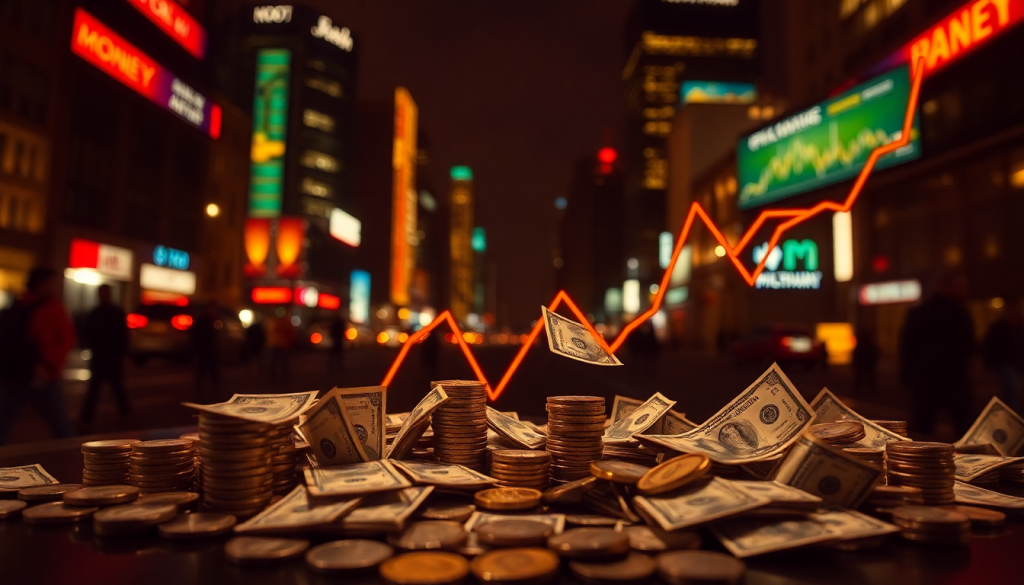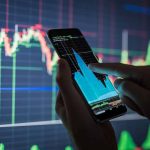Market crashes wipe out trillions in market capitalization within days. The 2008 financial crisis erased $8 trillion in US stock value, while the March 2020 COVID crash saw the S&P 500 plummet 34% in just 23 trading days. Could artificial intelligence detect warning signals that humans miss?
Financial institutions have deployed sophisticated trading AI bot across global markets, with algorithms now executing approximately 75% of trades on major exchanges. These systems analyze vast datasets spanning price movements, order flow, earnings reports, macroeconomic indicators, and social media sentiment—all at speeds impossible for human analysts.
The stakes are substantial. Bloomberg Intelligence projects the AI market will reach $1.3 trillion by 2032, with financial applications representing a significant segment. Yet this creates both promise and peril. While AI might identify crash precursors earlier than humans, SEC Chair Gary Gensler warns that overreliance on similar AI models across multiple institutions could trigger “selling spirals” that transform normal corrections into devastating crashes.
Market Crashes: Patterns and Predictability
Market crashes throughout history reveal recurring patterns despite their apparent randomness. The 1929 Great Depression, 1987’s Black Monday, the 2000-2002 Dot-com collapse, and 2008’s financial crisis each exhibited warning signals before their catastrophic declines. These included excessive leverage, extreme valuations, widening credit spreads, deteriorating market breadth, and unusual volatility patterns.
However, these patterns become obvious primarily in retrospect. Markets frequently display concerning metrics without subsequently crashing, creating what statisticians call the “signal-to-noise ratio” problem. For every genuine crash precursor, dozens of similar signals lead nowhere, explaining why even renowned economists consistently fail to predict market collapses reliably.
Traditional Prediction Methods and Their Limitations
Conventional crash prediction methods demonstrate inconsistent results. Technical indicators generate frequent false positives. Fundamental approaches like the Shiller CAPE ratio identify overvalued markets but provide little timing precision — markets often remain “overvalued” for years before corrections occur.
Sentiment indicators capture market psychology but frequently reach extremes without immediate consequences. Human forecasters face cognitive limitations including confirmation bias, recency bias, and narrative fallacy. These limitations explain why economists have correctly predicted only 148 of 153 recessions—unfortunately, they predicted a total of 440 recessions, most of which never occurred.
How AI Trading Systems May Contribute to Market Instability
The Flash Crash Phenomenon
The May 6, 2010 Flash Crash demonstrated algorithmic trading’s capacity to create market instability when the Dow plunged nearly 1,000 points within minutes before recovering most losses. Similar algorithmic amplification occurred during the 2016 British pound flash crash when sterling collapsed 6% against the dollar within minutes. More recently, a simple typo in Lyft’s earnings report caused algorithms to drive the stock 60% higher in after-hours trading until human traders identified the error.
These incidents illustrate algorithms’ tendency to accelerate market movements through feedback loops. When multiple systems react to the same signals simultaneously, they create artificial pressure, potentially transforming normal market fluctuations into extreme dislocations.
Systemic Risk from Homogeneous AI Models
SEC Chair Gensler has identified a “horizontal issue” where numerous financial institutions rely on identical or similar AI models, creating system-wide vulnerabilities. This homogeneity presents unique risks:
- Common data sources mean all models might receive the same flawed inputs simultaneously.
- Similar model architectures could produce identical trading recommendations across institutions.
- Correlation among algorithmic strategies increases during stress periods, precisely when diversification is most valuable.
- Speed advantages amplify impact — algorithms now respond to Federal Reserve announcements within 15 seconds versus minutes in the pre-AI era.
The financial system has experienced similar concentration risks before. During the 2008 crisis, overreliance on identical risk models led banks to underestimate mortgage default correlation. Today’s risk lies in thousands of trading algorithms potentially responding identically to market signals, creating unprecedented selling pressure during downturns.
AI’s Potential for Crash Prediction
Advanced Pattern Recognition Capabilities
Modern AI systems offer unprecedented pattern recognition capabilities—potentially identifying crash precursors invisible to human analysts. Machine learning algorithms can identify subtle correlations between thousands of variables across market data, economic indicators, and corporate fundamentals. Natural language processing extracts sentiment from earnings calls, SEC filings, news articles, and social media at scale.
Unlike human analysts who might monitor a few dozen indicators, AI systems simultaneously track thousands of metrics across global markets. They detect pattern changes within volatility surfaces on options, yield curve anomalies in bond markets, and unusual institutional order flow patterns—potentially identifying risk concentrations before they trigger broader market instability.
Early Warning Systems and Indicators
AI-based early warning systems focus on detecting market structure anomalies rather than merely extreme prices or valuations. These systems monitor market microstructure for early stress signs including widening bid-ask spreads, declining market depth, and increasing price impact of trades. Such metrics revealed deteriorating conditions days before the March 2020 COVID crash, when market liquidity began disappearing in less-monitored corners of the financial system.
Some sophisticated models incorporate regime-switching analysis to identify transition points between normal market functioning and crisis conditions. Rather than predicting specific price levels, these approaches detect when markets shift from ordinary volatility to crisis dynamics — potentially providing early warnings before dramatic price declines materialize.
Current AI Crash Prediction Models and Their Effectiveness
Academic research reveals both promise and limitations in AI crash prediction models. Cornell University researchers developed a machine learning system analyzing correlation patterns between S&P 500 stocks, which successfully identified periods of high crash risk during testing from 2000-2020, including warnings before both the 2008 financial crisis and 2020 COVID crash.
However, significant challenges persist. Most models struggle with prediction time horizons—identifying elevated risk without specifying when crashes might occur. False positives remain problematic, with many systems signaling crashes that never materialize. The fundamental challenge stems from crashes being statistically rare events, giving researchers insufficient examples for robust model training.
Commercial AI systems increasingly focus on scenario analysis rather than binary crash predictions, estimating potential drawdowns under various market conditions and identifying portfolio vulnerabilities. This approach acknowledges prediction limitations while still providing actionable risk intelligence. The most successful implementations combine AI pattern recognition with human judgment, using algorithms to flag potential concerns for expert analysis rather than triggering automatic portfolio actions.
Regulatory Frameworks and Future Directions
Regulators worldwide have proposed several approaches to address AI-driven market risks. The SEC’s “predictive data” rule would evaluate AI systems for conflicts of interest, while others suggest restructuring exchange mechanisms to prevent algorithmic selling spirals. These frameworks must balance innovation with stability—some experts argue increasing AI model diversity might actually create natural stabilization as different algorithms respond differently to market conditions.
Emerging technologies showing promise include:
- Quantum computing for complex market simulations.
- Federated learning for collaborative model training.
- Explainable AI addressing the “black box” problem.
- Causal AI distinguishing between genuine crash precursors and coincidental patterns.

Oliver Smith is an experienced blogger at Grammar Globe, Oliver Smith, an expert in English grammar and a master of wit, brings language to life with his playful take on puns. Through his works, he weaves humor into the rules of grammar, making learning fun and engaging for readers of all ages. Discover language with a smile!”






